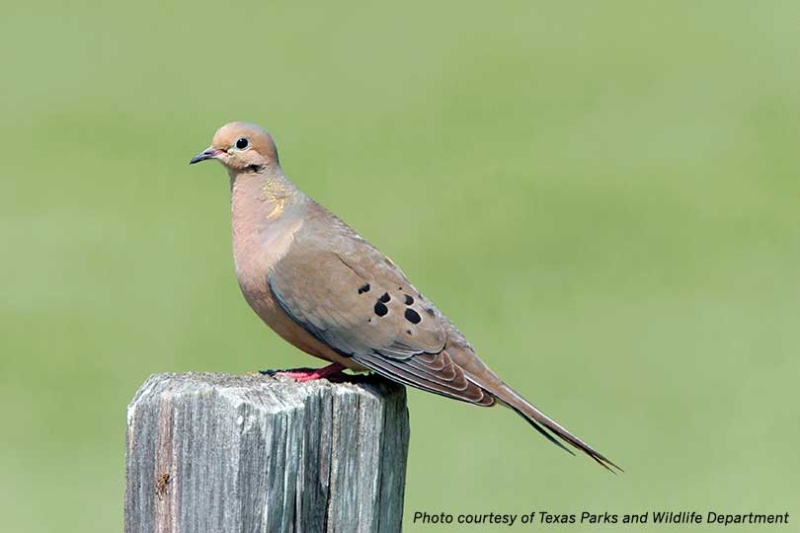By Emmy Powell
Communications Specialist
Texas dove hunters can expect a strong season this year, according to reports from the Texas Parks and Wildlife Department (TPWD).
According to the agency’s latest Dove Population Status Report, mourning dove numbers are climbing near record highs, while white-winged dove populations remain healthy despite a slight dip from last year’s survey.
“Heavy wind and rain brought on by storms that moved across parts of the state this spring likely impacted peak nesting season in hard hit areas, particularly parts of the Hill Country,” said Owen Fitzsimmons, TPWD Webless Migratory Game Bird Program leader. “But the milder temperatures and abundant rainfall created excellent breeding conditions across most of the state this summer. We’re in a very strong position heading into the opener.”
The favorable conditions also boosted food sources for doves this fall.
“This year, there should be plenty of preferred dove forage seeding out just in time for some late fall action in October, at the end of the first segment and into the second,” Fitzsimmons said.
As the heat continues to dry out conditions, hunters can find larger groups of doves at watering holes.
TWPD noted that doves typically feed and water twice a day, so scouting their movement is key to a successful hunt. TPWD officials recommend focusing on agricultural fields or areas with native food sources like sunflower, croton and other annual forbs and grasses.
Mourning dove
The statewide survey projects a 5% increase in the mourning dove population from last year, with an estimated population of 35.9 million. That is 28% above the long-term average since TPWD began standardized surveys in 2008.
The report shows most morning doves, 90%, were found in rural areas, although urban areas have more birds per square mile.
White-winged dove
White-winged dove numbers dipped slightly compared to last year. The 2025 estimate places their population at 11.7 million, an 8% decrease from 2024, but still 15% above the long-term average.
The 2025 population is third-highest estimate on record.
Hunting impact
Texas is home to seven species of native doves and pigeons, including the three legal game species—mourning, white-winged and white-tipped doves.
The Lone Star State leads the nation in dove hunting, accounting for 32% of the mourning dove and 87% of the white-winged dove harvest nationwide, according to TPWD. More than 300,000 hunters participate each year, generating over $500 million in economic activity.
Hunting season
The regular dove seasons are as follows:
- North Zone: Sept. 1 – Nov. 9 and Dec. 19 – Jan. 7
- Central Zone: Sept. 1 – Oct. 26 and Dec. 12 – Jan. 14
- South Zone: Sept. 14 – Oct. 26 and Dec. 12 – Jan. 22
The special white-winged dove days are Sept. 5-7 and Sept. 12-13.
During special white-winged dove days in the South Zone, hunting is allowed from noon to sunset only, with a daily bag limit of 15 birds, including no more than two mourning doves and two white-tipped doves. Starting Sept. 14 in the south zone, the regular daily aggregate bag limit is 15 doves, which may include no more than two white-tipped doves.
Hunters in Texas must have a valid Texas hunting license, a state migratory game bird endorsement and must be Harvest Information Program (HIP) certified.
Hunting and fishing licenses are now on sale.
Full hunting regulations are available on the Texas Outdoor Annual mobile app or online at OutdoorAnnual.com.


Leave A Comment